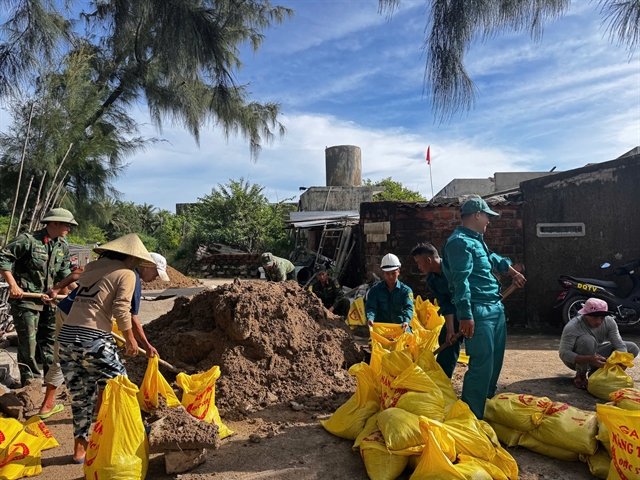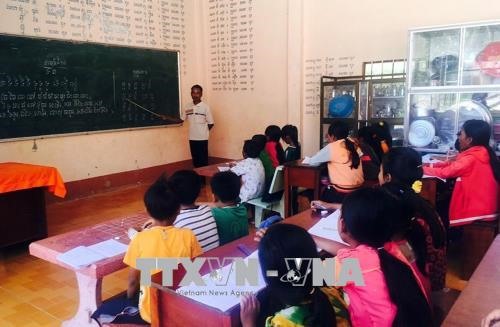 Society
Society

The education sector in Cửu Long (Mekong) Delta provinces are preparing for the new school year, investing in and upgrading infrastructure and building new facilities, especially at boarding schools for ethnic minorities.
 |
| Mekong Delta provinces are preparing for the upcoming academic year, with investments in upgrading infrastructure, building new facilities and improving education quality, especially at ethnic boarding schools. — VNA/VNS Photo |
MEKONG DELTA — The education sector in Cửu Long (Mekong) Delta provinces are preparing for the new school year, investing in and upgrading infrastructure and building new facilities, especially at boarding schools for ethnic minorities.
Sóc Trăng Province, for example, has built new facilities, and upgraded many classrooms and added equipment and tools.
Trần Văn Chuyện, chairman of the province’s People’s Committee, said that VNĐ10 billion (US$430,000) had been approved to build and repair educational facilities from pre-school to high school, including 937 classrooms and more than 140 other functional rooms equipped with a sufficient number of tables and chairs.
The investment aims to improve education quality and better conditions for teachers and students, and increase the percentage of national standard schools, he said.
The province now has 244 national standard schools, accounting for 44.4 per cent of the total 549 schools.
Of the figure, boarding schools for ethnic minorities and schools in remote areas with the Khmer minority were among those on the priority list with 60 per cent of total investment cost.
Construction of the Trần Đề District Ethnic Boarding School for secondary and high school students, worth VNĐ30 billion ($1.3 million), will open this year.
Between 2018 and 2020, the province plans to invest VNĐ72 billion ($3.08 million) to build 10 new classrooms and 122 dormitory rooms for ethnic students in the localities.
Meanwhile, Cà Mau Province’s People’s Committee will grant more than VNĐ99 billion ($4.2 million) from its budget to repair classrooms from 2018 to 2020.
According to estimates from 2001 to 2017, the province has a total of 543 schools from pre-school to high school, including 259 national standard schools.
In An Giang Province, its education sector has worked with agencies to ensure that all students, regardless of financial status, can attend school.
Local authorities, in collaboration with the Study Promotion Association, have encouraged all school-age children to attend classes, and will provide assistance to disadvantaged students who are at risk of dropping out of school.
Life skills, creativity, and foreign languages is also emphasized, while advanced IT in teaching and learning will be used.
Nguyễn Thanh Bình, vice chairman of An Giang Province’s People’s Committee, has asked the education sector to upgrade professional skills of teachers and educational administrators, improve health care at schools, and increase investment in school facilities, especially classrooms and toilets.
Localities also need to closely supervise private and public kindergartens, preventing physical abuse against students and ensuring food hygiene at schools’canteens and collective kitchens.
Hậu Giang Province plans to use IT for management during the new academic year, according to the deputy director of the provincial Department of Education and Training, Nguyễn Hùng Nhiên.
It also needs to strictly implement administrative reforms in education, and apply scientific and technological advances in management and teaching.
The province also continues to deploy open-source software for all education and training units and agencies as requested by the Ministry of Education and Training.
Its educational sector is cooperating with Viettel’s branch in Hậu Giang to offer broadband internet services for all education and training institutions, and works with VNPT Hậu Giang to hold online meetings for education and training officials.
Management used software to keep school records on staff, students, teachers and facilities.
It continues to work with units and organisations to open contests for informatics and design e-learning lessons to boost IT in teaching and learning.
An Giang has 340 schools at all levels, providing more than 5,200 classrooms for 16,000 students from kindergarten to high schools in the 2018–2019 school year. — VNS